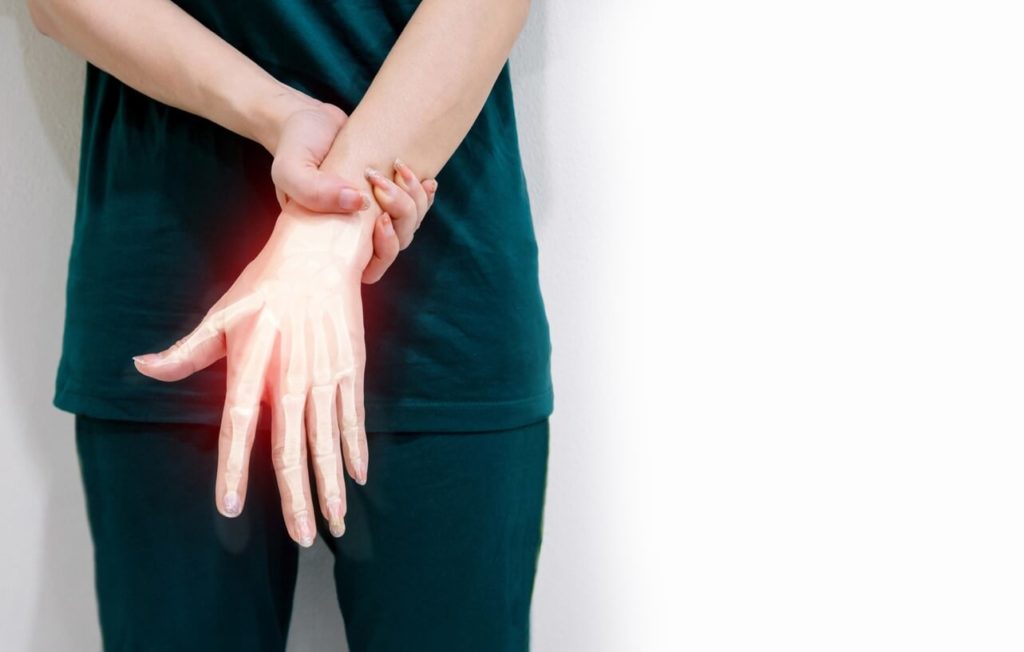Tendonitis: how to treat and relieve pain?
Written by: Loris Vitry (holistic coach)
Validated by: Cathy Maillot (Osteopath)
Caution: If you have any medical questions or concerns, please speak to your doctor. Even if the articles on this site are based on scientific studies, they do not replace professional medical advice, diagnosis or treatment.

Tendinitis, if not treated quickly, can lead to paralysis of infected limbs.
In fact, tendinitis is an irritation of the ligaments which connect the bones and the muscles of the tendon.
Frequent use of tendons without injury, activity, or discharge can lead to the development of tendonitis.
The pain from this ailment is unbearable and may be the cause of paraplegia.
Fortunately, there are solutions to alleviate and cure this ailment before it becomes serious.
Find out here how to treat and relieve the pain of tendonitis.
What are the causes of tendonitis?
Before relieving tendonitis, it is important to recognize the causes of the problem.
So, in general, the older you get, the more fragile parts of your body become, especially the tendon area.
Old age is therefore a potential cause of tendonitis.
Also, contrary to what one might think, this disease is not the preserve of workers and athletes, everyone can be affected by it due to the diversity of factors that lead to tendonitis.
By knowing the causes of this condition, you will be able to counter it effectively.
For example, a gamer can get tendonitis of the shoulder tendon, but also of the thumb.
This is due to the frequency with which he makes use of the games console.
As we said above, age is a factor that over time can make the tendon fragile.
More often, the causes of tendonitis are mechanical.
These are frequent activities, we can cite:
- the transport of heavy loads (back or shoulder),
- vibrations that affect the tendons,
- positions inadequate for good posture.
Frequent physical exercise such as bowling, golf or even running can also be a cause of tendonitis.
Symptoms of tendonitis
It is important to know that the signs change depending on the affected area.
Indeed, tendonitis appears thanks to sharp pain and stiffness that are felt in the tendon area.
Upon awakening, his sensations are very sharp and strong.
Depending on the use to which it is put, the pain can vary.
Very often the pain is followed by swelling that appears in the affected area.
As soon as you touch said area, if you feel that your tendon is hard and thick, then your condition is at an advanced stage.
In this case, it will be necessary to consult a specialist.
To not come to this, you must undergo treatment in order to relieve and cure the ailment.
Apply the GREC protocol: Ice, Rest, Elevation and Restraint (GREC).
How to treat and relieve tendonitis?
Now that you know more about the causes and symptoms, there are several ways you can relieve and treat tendonitis.
Rest, a crucial element in the care of tendonitis
If your tendon is causing you pain, there is no need to make your condition worse by putting more stress on it.
Rather, you should reduce the activities that make you use it.
If you run a lot, switch to another activity such as walking or swimming.
These activities make less use of your tendons.
Also, less stress and more rest is a better solution.
However, prolonged rest can lead to swelling of the infected area, slowing healing.
It is requested to gradually resume activities.
Put on the affected area of ice
Ice helps to limit swelling, but also to calm the pain.
Indeed, the cold has an analgesic effect.
Put an ice pack on the affected part and wait for a good thirty minutes.
For your shower, wash with cold water.
You can also soak the tendon in a tub filled with water and ice cubes.
These methods will help you relieve the pain.
As another solution, you can do an ice massage.
Simply place a bowl with filled water in the freezer and massage in small movements, the affected part with the frozen container.
For people who can not stand contact with the cold, it is possible to apply to the affected area, a clean cloth with ice inside.
Apply pressure to the affected area
Use the compression band to compress the tendon.
This technique promotes a significant reduction in swelling and will allow you to regain your mobility.
This is because the swelling of the tendon reduces your mobility, to remedy this, it is important to apply a compress.
A bandage is required in some situations.
Once the swelling has stopped, you can remove the bandage.
Lift the traumatized part up high
Make sure you can position your tendon high.
It sounds uncomfortable, however, it is a step towards reducing the swelling and achieving healing.
For people with tendonitis of the knee or heel, this method is particularly recommended.
Drug treatment to relieve inflammation
Depending on the type of tendonitis and the extent of the pain, you may take a pain reliever or an anti-inflammatory.
These two medicines help to relieve your pain.
Creams to treat tendonitis also offer a good result.
Also, to relieve the pain, you may use paracetamol or ibuprofen which are often prescribed.
Consult a specialist to treat tendonitis
If, despite the care taken, the pain has still not gone away, you will need to see your doctor.
He will make you do analyzes and examinations.
In view of the results, he will give you the prescription to follow.
If your tendon is broken, the latter will recommend a surgeon for an operation.
In addition, physical therapy sessions can save you from having surgery.
Indeed, doctors recommend physiotherapy sessions when the pain is not very serious.
The physiotherapist will show you exercise regimens to do at home in order to strengthen your muscles.
These exercises will include the affected muscles, but also the affected tendon.
Ultimately, regardless of the type of tendonitis or the intensity of the pain, it is possible to relieve the pain, but also to cure it permanently.
Continue reading:
Positive visualization: how to visualize mentally?

